Geometric Integration Images
Geometric integration is a new approach to simulating the motion
of large systems. The new methods, inspired by chaos theory but driven
by the demands of modern applications are faster, more reliable, and
often simpler than traditional approaches. They are being used in areas
as diverse as a possible celestial origin of the ice ages, the structure
of liquids, polymers, and biomolecules, quantum mechanics and nanodevices,
biological models, chemical reaction-diffusion systems, the dynamics
of flexible structures, and weather forecasting.
Although diverse, these systems have certain things in common that makes
them amenable to the new approach. They all preserve some underlying geometric
structure which influences the qualitative nature of the phenomena they
produce. In geometric integration these properties are built into the
numerical method, which gives the method markedly superior performance,
especially during long simulations. In our research we are exploring
all possible geometric or structural features that systems can have,
the implications for their long-time dynamics, and how to design efficient
numerical integrators that preserve these geometric properties.
Here is a selection of pictures, some new, some historical, mostly
culled from the Web, showing
some of the applications of geometric integrators.
--
Robert McLachlan
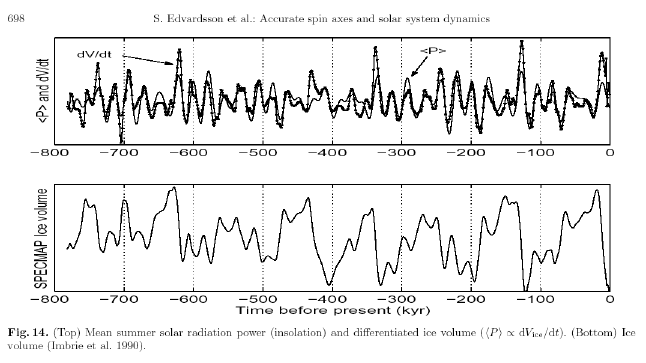
(From S. Edvardsson, K. G. Karlsson, and M. Engholm,
Accurate spin axes and solar system dynamics: Climatic
variations for the Earth and Mars,
Astronomy & Astrophysics 384, 689-701 (2002)). In this study
a one million year simulation of the whole solar system
including the moons and obliquity of Earth and Mars found
strong correlation between the ice ages and the earth's orbit.
The motion is calculated with a symplectic integrator.
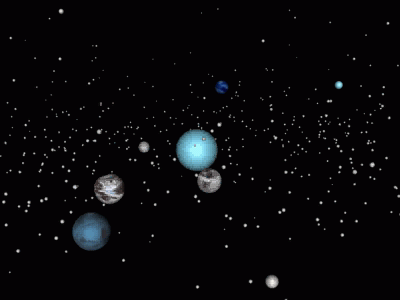
A frame from a nice movie made by
Sverker Edvardsson of a simulation of the
asteroid belt and the inner solar system.
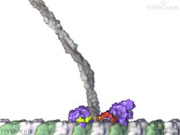
The protein molecule kinesin walks along a pre-prepared track inside a cell.
This is a single frame of a movie
from the Vale Lab, UCSF,
of a simulation of this walk. It is not calculated using true molecular
dynamics; although all the states shown are local energy minima, they are
not linked together dynamically.
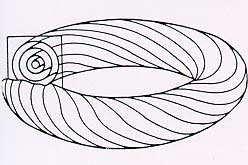
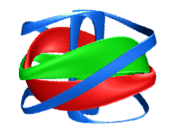
(Left) Sketch of the flow on a family of invariant tori. From V. I. Arnold,
Small denominators and problems of stability of motion in
classical and celestial mechanics,
Uspehi Mat. Nauk (Russ. Math. Surv.) 18 (1963) no. 6 (114) 91--192.
(Right) Three computed tori in an actual Hamiltonian system, arising
in celestial mechanics.
P. Atela and R. I. McLachlan, Global behaviour of the
charged isosceles three-body problem,
Int. J. Bifurcations Chaos 4(4) (1994), 865-884.
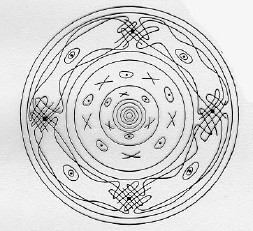
Also from the 1963 Arnold book, a sketch showing a
cross-section of the tori in the figure above after
perturbation. Some are destroyed and replaced by
chaos, some persist. Poincare famously knew of this
structure but said he would not attempt to draw it!
A lot of this structure is typically preserved by a symplectic integrator.
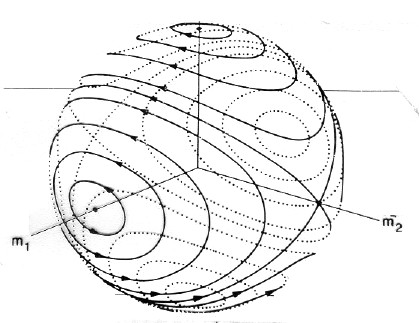
This familiar image of the phase portrait of the free rigid body (such as
a hammer tossed in the air), from
Bender & Orszag, Advanced Mathematical Methods for
Scientists and Engineers, illustrates a variety of features of
a dynamical system which one may want to preserve in a simulation:
(i) it is a noncanonical (Poisson) Hamiltonian system;
(ii) the motion lies on a sphere, i.e. a non-Euclidean phase space;
(iii) the sphere is a level set of a Casimir (conserved quantity)
of the system's Poisson structure;
(iv) the curves are the level sets of the energy;
(v) the system has homoclinic orbits.
(vi) the system is reversible under reflection through the centre of the sphere.
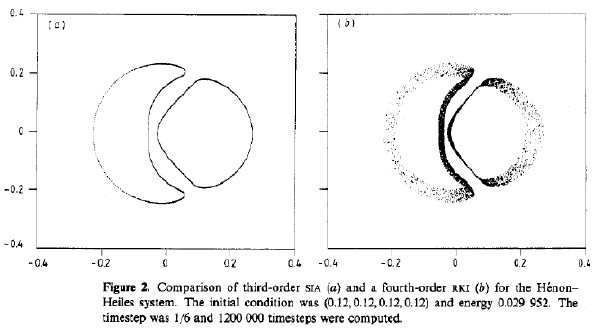
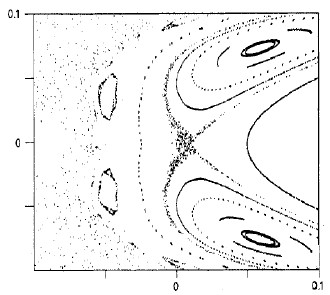
These early pictures showing the results of a symplectic integration,
from
P. J. Channell and J. C. Scovel,
Symplectic integration of Hamiltonian systems,
Nonlinearity 3 (1990), 231--259, prompted a rush of interest
in symplectic integrators.
In the first picture, the symplectic integrator has captured
a slice through an invariant torus of the Henon-Heiles system.
On the right, a (nonsymplectic) integrator has destroyed the torus.
In the section picture, 105
time steps for 10 different initial conditions are shown.
Smooth curves (``KAM tori'') correspond to regular, quasiperiodic
motion; clouds correspond to chaotic motion.
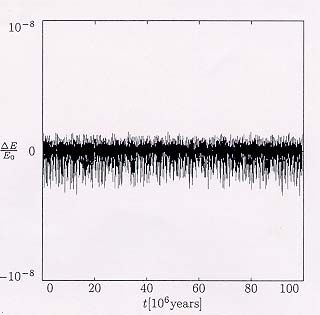
Energy error of leapfrog applied to the whole
solar system over 108 years, from
J. Wisdom and M. Holman, Symplectic maps for the N-body problem,
Astron. J. 102 (1991), 1528-1538. The way the energy error oscillates
but does not grow in time was an early indication of the good
properties of symplectic integrators.
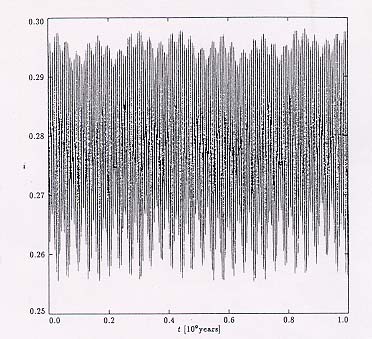
Evidence of chaos in the solar system: also from the preceding paper,
this shows the
inclination of Pluto over 109 years.
Even after one billion years the inclination has reached a new maximum.
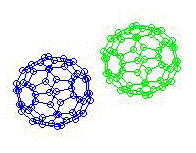 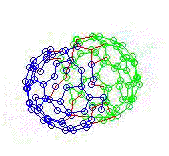

Steve Bond
has a page of nice molecular dynamics movies. Here are two frames
from a movie of two C60 buckyballs (left), colliding (centre) to form
a more stable C120 molecule (right).
|